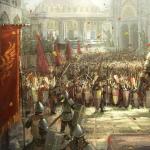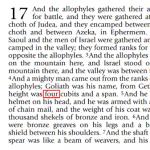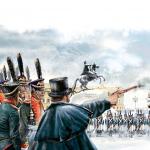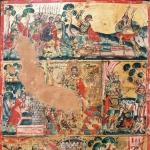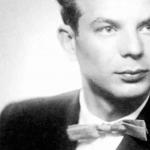The largest geographical discoveries of the 15th - 17th centuries table. Chapter IV
For Western Europe, the 15th – 16th centuries were the heyday of the Middle Ages. There were a lot of inventions, but in the 14th – 15th centuries the main thing was the top and bottom wheel in mining, hence the deepening of mines and the development of metallurgy.
That is, the metal is of better quality, which entails the development of mechanical engineering. In shipbuilding, ships appear that offer the opportunity to sail long distances.
Mechanical parts appear, the number of goods increases, and trade develops. Gold and silver are used as money. There is no gold in Europe, it is in India (+ spices, silk, tea).
Traditionally, Europeans knew only one way to India - through the Mediterranean Sea, and then overland. But the Mediterranean Sea was captured by the Seljuk Turks, from the 14th – 15th centuries they dominated the sea, took high duties from European merchants and pirated. Because of this, the route through the Mediterranean Sea became very expensive and unprofitable, and the question arose of finding new routes to India.
Thus, we have two reasons:
· Economic;
· Interference in the form of the Turks in the Mediterranean Sea.
Spain and Portugal were the first to embark on the path of geographical discovery.
Portugal:
· Had a favorable geographical location;
· By the 15th century, Spain and Portugal were freed from the Arabs who had captured the Iberian Peninsula and inherited Arab knowledge;
· In search of work, sailors from Genoa went to Spain and Portugal;
· In the 15th century, Prince Henry the Navigator, a fanatic of the sea, came to power;
· An observatory was created at Cape Sagrim (Portugal) to study celestial bodies;
· A school for sailors has been opened.
Prince Henry patronized the merchants and gave them a monopoly right to trade in the countries where they went. He himself had a percentage of the profits. And I came to the conclusion that one of the most profitable types of trade is the slave trade.
1415 - The Portuguese entered into a fight with the Mauritanians (Morocco) and captured the port of Ceuta on the opposite side of the Strait of Gibraltar. As a result, in the first half of the 15th century, the Portuguese sailors boldly set off and reached the equator along the coast of Africa. They discovered the mouths of the Congo and Niger rivers.
1486 - with the patronage of Henry, the expedition of Dnas (Dnash) sets off. They left Portugal, moving along the coast of Africa. At stops there were meetings with native tribes and the team suffered casualties. Having reached the southern tip of Africa, they named it the Cape of Good Hope, but were forced to return due to lack of supplies.
1498 - the beginning of Vasco da Gama's expedition. They moved freely for 4 months, but the Indian Ocean met them with a storm. Scurvy began among the crew, and the sailors rebelled. Da Gama managed to suppress the rebellion and found an experienced pilot in Africa (a person capable of charting a course at sea along an unknown road).
May 1498 - the expedition ended up in the Indian city of Calcutta, on the western coast of the Hindustan Peninsula. The Indian Raja allowed them to purchase spices and precious stones at preferential prices. This is how a trade route was formed. The expedition lasted two years, 2/3 of all sailors died, but the cost of the goods brought was 60 times higher than the cost of the expedition. To consolidate dominance in India, Portugal sent its viceroy Alphonse D Albuqueri there in 1509.
Wanting to get ahead of Portugal, the Spaniards took a different path. At this time, Ferdinand and Isabella ruled (by marriage they united the two largest regions of Spain - Arakun and Castile). They patronized sailors and sheltered many Genoese sailors. Among them was the Genoese Christopher Columbus. He was the son of a doctor from Genoa. In his youth he took part in long voyages in the Mediterranean Sea, and then took up cartography (the study and systematization of maps). So he came across the works of the ancient Greek philosopher Aristotle, in which the sphericity of the Earth was proved, but the distances were several times smaller than the real ones. And Columbus decides that one can get to India by sailing to the West (they knew that the Portuguese were preparing to sail to the East).
It took him 9 years to convince Ferdinand and Isabella to help outfit three ships with a crew of 90 people. In the summer of 1492 the expedition began. On the 70th day they reached a small island and named it San Salvador (Savior), then Cuba and Haiti were discovered. By the end of the journey, out of three ships, only one remained, which brought gold. Columbus was sure that he had discovered the western coast of India and called this area Westindia. During his life, Columbus made three more voyages along this route. As a result, he discovered many islands in the Caribbean, but did not find any gold or other riches. During these discoveries, he began to suspect that this was not India, but a certain continent, but he did not speak about it out loud. Only the Italian Amerigo Vespucci proved that the lands discovered by Columbus were a continent.
1500 - Portugal sends Cabral's expedition to America and discovers the territory of Brazil.
Once again returning with nothing, Columbus was demoted (losing all his ranks) and spent the rest of his life paying off debts for his expeditions. After Columbus's death, his discovery caused a stir in Europe. Adventurers moved to America and oppressed Indian tribes in groups of 300–400 people. The Europeans destroyed the entire ancient culture of the Indians.
1519 - 1522 - the Spaniard Ferdinand Magellan crosses the Atlantic Ocean on five ships, passes along the eastern coast of South America, goes around it and finds the Strait, later called the Strait of Magellan. He turns towards the West Coast of South America and enters new waters. For 4 months they were calm and the ocean was named Pacific. He faces food and water shortages and disease. In search of land, he ends up in the Philippine Islands, where he is met with hostility by the natives. In a skirmish with them, Magellan dies. The remaining commanders went home, crossing the Indian Ocean and further along the usual route. Of the 256 people, 18 sick sailors returned. This expedition was of purely geographical significance; it was proven that the Earth is spherical.
Consequences of discoveries for Europeans.
1. Influx of wealth. The Portuguese received gold and silver and declared a monopoly on trade. But they had nowhere to put so much gold, they produced nothing, and bought goods from more industrialized countries. Gold was given to England in exchange for goods (cloth). Increasing demand for goods in Europe required expansion of production, but there were shop restrictions. And only a few applied technical innovations, found workers and created enterprises based on shared labor, i.e. manufactory. Manufactories were mainly created in rural areas. Because There is nothing to do in winter; the villages have long been engaged in fishing. Each village specialized in its own. In England, the main type of trade is cloth making.
2. As a result of the discoveries, the merchants accumulated a lot of money, they began to visit villages and buy products in bulk. Initially, merchants depended on the peasants (on the ability to produce a certain amount of goods), the peasant set his own price. But since some did something better, while others did it worse, manufactories arose in rural areas, where a large entrepreneur, a former merchant, hired peasants who could live in different villages and not know about the existence of others. Such manufacture was called dispersed. Gradually, the peasants began to completely depend on their master. This way of forming manufacture is typical for light industry (great demand results in a faster turnover of money than the development of heavy industry). After the initial stage, production either expands or a new business is opened.
Thus, the main consequence is that manufacture begins to form, industrialization appears. There is a need for a new culture and religion (Reformation, Renaissance, change in the political system - the elimination of the absolute monarchy)
By the 15th century, the prerequisites had developed in Europe for sailors to explore maritime spaces. Vessels appeared, designed specifically for the movement of European sailors. Technology is developing rapidly: by the 15th century, the compass and sea charts were improved. This made it possible to discover and explore new lands.
In 1492-1494 Christopher Columbus Bahamas, Greater and Lesser Antilles. By 1494 he reached America. Around the same time - in 1499-1501. – Amerigo Vespucci sailed to the shores of Brazil. Another famous one - Vasco da Gama - opens at the turn of the 15th-16th centuries. a continuous sea route from Western Europe to India. This contributed to the development of trade, which in the 15-16th centuries. played a primary role in the life of every state. X. Ponce de Leon, F. Cordova, X. Grijalva discovered the Gulf of La Plata, the Florida and Yucatan peninsulas.
The most important event
The most important event at the beginning of the 16th century was Ferdinand Magellan and his team. Thus, it was possible to confirm the opinion that it has a spherical shape. Later, the strait through which his route passed was named in honor of Magellan. In the 16th century, Spanish travelers almost completely discovered and explored South and North America. Later, at the end of the same century, Francis Drake made a trip around the world.
Russian sailors did not lag behind European ones. In the 16th-17th centuries. The development of Siberia and the Far East is rapidly progressing. The names of the discoverers I. Moskvitin and E. Khabarov are known. The basins of the Lena and Yenisei rivers are open. The expedition of F. Popov and S. Dezhnev sailed from the Arctic Ocean to the Pacific Ocean. Thus, it was possible to prove that Asia and America are not connected anywhere.
During the Great Geographical Discoveries, many new lands appeared on the map. However, there were still “white” spots for a long time. For example, Australian lands were studied much later. Geographical discoveries made in the 15th-17th centuries allowed the development of other sciences, for example, botany. Europeans had the opportunity to get acquainted with new crops - tomatoes, potatoes, which later began to be consumed everywhere. We can say that the Great Geographical Discoveries marked the beginning of capitalist relations, since thanks to them trade reached a global level.
In different countries, the sailor's holiday is sometimes celebrated on different days. However, this event is always accompanied by congratulations, fun, themed events, etc.
Members of the International Maritime Organization in 2010 decided to establish a day of seafarers, which would be celebrated in many countries around the world on June 25. This was done for two reasons. Firstly, it was necessary to create an international holiday that would unite sailors from different countries. Secondly, it was decided to devote this day to merchant seafarers, whose merits turned out to be somewhat diminished in comparison with the merits of military sailors.
On Sailor's Day, in some countries of the world it is customary to congratulate merchant marine workers, give them gifts, broadcast films about sailors, organize thematic exhibitions and even festive concerts. It is on June 25 that speeches are made about how important seafarers are for the world economy, and they remember famous sailors of the past. Fleet workers throw parties, give each other souvenirs and have fun. In some cases, the best navigators may be awarded certificates of honor or given diplomas.
The main goal of celebrating Sailor's Day is to increase the prestige of the profession, attract young people, and strive to demonstrate the importance of the work of seafarers. In addition, this particular holiday often becomes an occasion for raising important issues related to navigation.
There are also countries that have their own national sailor's day. In particular, we are talking about Iceland. It is there that it is customary to congratulate all sailors on the first Sunday in June. The traditions of celebrating Sailor's Day in Iceland have hardly changed for many years. Every year on the first Sunday of June, a grandiose maritime festival is held there, which can be visited not only by sailors, but also by representatives of any other professions.
During the festival, you can see ships, walk along the deck, take part in fun sea races, ride a boat, eat several dishes from the sailors' menu and buy themed souvenirs. On this day, rescuers not only carry out their regular work, but also organize competitions, trying to demonstrate their skills. Sailors also organize swimming competitions.
The main geographical discoveries in human history were made in the 15th - 17th centuries. This period saw a number of important journeys made by Europeans, which led to the discovery of new trade routes, lands, and the seizure of territories.
As historians call these events, they became possible largely thanks to the achievements of science and technology. It was during this historical period that the creation of reliable sailing ships, the improvement of navigational and coastal maps and compasses, the substantiation of the idea of the sphericity of the Earth, etc. occurred. In many ways, the beginning of such active research was facilitated by the shortage of precious metals in a highly developed commodity economy, as well as the dominance of the Ottoman Empire in Africa, Asia Minor and the Mediterranean Sea, which made trade with the Eastern world difficult.
The discovery and conquest of America is associated with the name of H. Columbus, who discovered the Antilles and Bahamas, and in 1492, America itself. Amerigo Vespucci sailed to the coast of Brazil as a result of expeditions of 1499-1501.
1497-1499 - the time when Vasco da Gama was able to find a continuous sea route to India from Western Europe along the coast of South Africa. By 1488, the Portuguese navigator, as well as a number of other travelers, had made geographical discoveries on the southern and western coasts of Africa. The Portuguese visited both the Malay Peninsula and Japan.
Between 1498 and 1502, A. Ojeda, A. Vespucci and other Portuguese and Spanish navigators explored the northern coast of South America, including its eastern (the territory of modern Brazil) coast and part of the Caribbean coast of Central America.
Between 1513 and 1525, the Spaniards (V. Nunez de Balboa) managed to cross the Isthmus of Panama and reach the Pacific Ocean. In 1519-1522, Ferdinand Magellan made the first voyage around the Earth: he went out into the Pacific Ocean, circumnavigating South America, and thus proved that the Earth is spherical. For the second time, in 1577-1580, Francis Drake did this.
The Aztecs' possessions were conquered by Hernan Cortez in 1519-1521, the Incas by Francisco Pizarro in 1532-1535, the Mayans in 1517-1697, etc.
The geographical discoveries of the British were associated with the search for a northwestern route to Asia, as a result of which they discovered the island of Newfoundland and the coast of North America (1497-1498, J. Cabot), the island of Greenland, etc. (G. sailed from 1576 to 1616). Hudson, W. Baffin, etc.). French travelers explored the coast of Canada (J. Cartier, 1534-1543), the Great Lakes and the Appalachian Mountains (1609-1648, S. Champlain and others).
The great travelers of the world began their voyages not only from European ports. Among the explorers there were many Russians. These are V. Poyarkov, E. Khabarov, S. Dezhnev and others who explored Siberia and the Far East. Among the discoverers of the Arctic are V. Barents, G. Hudson, J. Davis, W. Baffin and others. The Dutch A. Tasman and V. Janszoon became famous for their travels to Australia, Tasmania and New Zealand. In the 18th century (1768), the region was re-explored by James Cook.
Geographical discoveries of the 15th - 17th centuries, as a result of which a significant part of the earth's surface was explored, helped to establish the modern contours of the continents, with the exception of part of the coasts of America and Australia. A new era was opened in the geographical study of the Earth, which led to serious geopolitical and socio-economic consequences and was important for the further development of a number of natural sciences.
The discovery of new lands, countries, and trade routes contributed to the further development of trade, industry and relations between states. This led to the beginning of the formation of the world market and the era of colonialism. The development of Indian civilizations in the New World was artificially interrupted.
The great geographical discoveries are the most important period in human history from the late 15th to the mid-16th centuries. The brave discoverers of Spain and Portugal opened up new lands to the Western world, thereby ushering in the development of new trade routes and connections between continents.
The beginning of the period of great geographical discoveries
Throughout the existence of the human race, many important discoveries were made, but only those that took place in the 16th and 17th centuries were included in history under the name “great”. The fact is that neither before this period of time, nor after it, none of the travelers and researchers were able to repeat the success of the medieval discoverers.
Geographical discovery is understood as the discovery of new, previously unknown geographical objects or patterns. This could be a part of the earth or an entire continent, a water basin or strait, the existence of which on Earth cultural humanity did not suspect.

Rice. 1. Middle Ages.
But why did the Great Geographical Discoveries become possible precisely between the 15th and 17th centuries?
The following factors contributed to this:
- active development of various crafts and trade;
- the growth of European cities;
- the need for precious metals - gold and silver;
- development of technical sciences and knowledge;
- serious discoveries in navigation, the emergence of the most important navigation instruments - the astrolabe and compass;
- development of cartography.
The catalyst for the Great Geographical Discoveries was the unfortunate fact that Constantinople in the Middle Ages came under the rule of the Ottoman Turks, who prevented direct trade between European powers and India and China.
Great travelers and their geographical discoveries
If we consider the periodization of the Great Geographical Discoveries, the first to give the Western world new routes and limitless opportunities were the Portuguese navigators. The British, Spaniards and Russians, who also saw great prospects in the conquest of new lands, did not lag behind them. Their names will forever go down in the history of navigation.
- Bartolomeu Dias - a Portuguese navigator who, in 1488, in search of a convenient route to India, circumnavigated Africa, discovered the Cape of Good Hope and became the first European to find himself in the waters of the Indian Ocean.
- - it is with his name that the discovery of an entire continent - America - is associated in 1492.

Rice. 2. Christopher Columbus.
- Vasco da Gama - commander of the Portuguese expedition, who in 1498 managed to establish a direct trade route from Europe to Asia.
For several years, from 1498 to 1502, Christopher Columbus, Alonso Ojeda, Amerigo Vespucci and many other navigators from Spain and Portugal carefully explored the northern coast of South America. However, acquaintance with the Western conquerors did not bring anything good to the local residents - in pursuit of easy money, they behaved extremely aggressively and cruelly.
- Vasca Nunens Balboa - in 1513, a brave Spaniard was the first to cross the Isthmus of Panama and open the Pacific Ocean.
- Ferdinand Magellan - the first person in history who, in 1519-1522, traveled around the world, thereby proving that the Earth is spherical.
- Abel Tasman - discovered Australia and New Zealand to the Western world in 1642-1643.
- Semyon Dezhnev - Russian traveler and explorer who was able to find the strait connecting Asia with North America.
Results of the Great Geographical Discoveries
Great geographical discoveries significantly accelerated the transition from the Middle Ages to the New Age, with its most important achievements and the flourishing of most European states.
TOP 4 articleswho are reading along with this
Humanity looked at the world around us differently, and new horizons opened up for scientists. This contributed to the development of natural sciences, which could not but affect the general standard of living.
The conquest of new lands by Europeans led to the formation and strengthening of colonial empires, which became a powerful raw material base of the Old World. There was cultural exchange between civilizations in various areas, there was a movement of animals, plants, diseases and even entire peoples.
The Age of Great Geographical Discovery is the most important stage in human history. This is a time when the outlines of continents, seas and oceans become more accurate, technical instruments are improved, and the leading countries of that time send sailors in search of new rich lands. In this lesson you will learn about the sea expeditions of Vasco da Gama, Christopher Columbus and Ferdinand Magellan, as well as their discovery of new lands.
Background
Among the reasons for the Great Geographical Discoveries are:
Economic
After the era of the Crusades, Europeans developed strong trade ties with the East. In the East, Europeans bought spices, fabrics, and jewelry. In the 15th century The land caravan routes along which Europeans traded with eastern countries were captured by the Turks. The task of finding a sea route to India arose.
Technological
The compass and astrolabe (an instrument for measuring latitude and longitude) were improved.
New types of ships appeared - caravel, karakka and galleon. They were distinguished by their spaciousness and powerful sailing equipment.
Navigation charts were invented - portolans.
Now Europeans could not only make traditional coastal voyages (i.e., mainly along the coast), but also go far into the open sea.
Events
1445- an expedition organized by Henry the Navigator reached Cape Verde (the western point of Africa). The island of Madeira, the Canary Islands, and part of the Azores were discovered.
1453- Constantinople is captured by the Turks.
1471- The Portuguese reached the equator for the first time.
1488- Bartolomeu Dias' expedition reached the southernmost point of Africa - the Cape of Good Hope.
1492- Christopher Columbus discovered the islands of San Salvador, Haiti, Cuba in the Caribbean Sea.
1497-1499- Vasco da Gama reached the Indian port of Calicut, circumnavigating Africa. For the first time, the route to the East through the Indian Ocean was opened.
1519- Ferdinand Magellan sets off on an expedition in which he discovers the Pacific Ocean. And in 1521 it reaches the Mariana and Philippine Islands.
Participants

Rice. 2. Astrolabe ()

Rice. 3. Caravel ()
Successes have also been achieved in cartography. European cartographers began to draw maps with more accurate outlines of the coasts of Europe, Asia and North America. The Portuguese invented navigational maps. In addition to the outlines of the coast, they depicted settlements, obstacles encountered along the way, as well as the location of ports. These navigation charts were called portolans.
The discoverers became Spaniards and Portuguese. The idea of conquering Africa was born in Portugal. However, the knightly cavalry turned out to be helpless in the sands. Portuguese prince Henry the Navigator(Fig. 4) decided to try the sea route along the west coast of Africa. The expeditions he organized discovered the island of Madeira, part of the Azores, and the Canary Islands. In 1445, the Portuguese reached the western point of Africa - Cape Verde.. Somewhat later, the coast of the Gulf of Guinea was discovered. A large amount of gold and ivory were discovered there. Hence the name - Gold Coast, Ivory Coast. At the same time, African slaves were discovered, which were traded by local leaders. Portugal became the first European country to sell live goods.

Rice. 4. Henry the Navigator ()
After the death of Henry the Navigator, the Portuguese reached the equator in 1471. In 1488, an expedition Bartolomeu Dias reached the southern tip of Africa - Cape of Good Hope. Having circumnavigated Africa, this expedition entered the Indian Ocean. However, due to a rebellion among the sailors, Bartolomeu Dias was forced to return. His path continued Vasco da Gama (Fig. 5), which in 1497-1499. circumnavigated Africa and after an 8-month voyage arrived at the Indian port of Calicut (Fig. 6).

Rice. 5. Vasco da Gama ()

Rice. 6. Opening of the sea route to India, Vasco da Gama’s route ()
Simultaneously with Portugal, the search for a new sea route to India began Spain, which at that time was ruled Isabella of Castile and Ferdinand of Aragon. Christopher Columbus(Fig. 7) proposed a new plan - to reach India, moving west across the Atlantic Ocean. Christopher Columbus shared the view that the earth was spherical. On August 3, 1492, Columbus set out from Spain on three caravels “Santa Maria”, “Nina” and “Pinta” in search of India (Fig. 8). On October 12, 1492, a shot was heard on the Pinta caravel. This was the signal: the sailors had reached the island they named San Salvador, which translated means “holy savior.” After exploring the island, they went south and discovered two more islands: Haiti (then Hispaniola) and the island of Cuba.

Rice. 7. Christopher Columbus ()

Rice. 8. Route of Christopher Columbus ()
Columbus's first expedition lasted 225 days and discovered Caribbean Sea. During the next three expeditions, Columbus discovered the coast of Central America and the northern coast of South America. However, the Spanish crown was not satisfied with the amount of gold that came into the country. Soon they turned away from Columbus. He died in 1506 in poverty, confident that he had discovered a new sea route to India. The continent discovered by Columbus was originally called West Indies(Western India). Only later was the name given to the continent America.
The rivalry between Spain and Portugal led to the first division of the world in history. IN 1494 year was concluded Treaty of Tordesillas, according to which a conventional meridian was drawn along the Atlantic Ocean somewhat west of the Azores Islands. All newly discovered lands and seas to the west of it were to belong to Spain, and to the east - to Portugal. However Ferdinand Magellan's first circumnavigation of the world corrected this document.
Back in 1513, the Spaniard Vasco de Balboa crossed the Isthmus of Panama and reached the shores of the Pacific Ocean. He then called it the South Sea. In the autumn of 1519, on five caravels with a crew of 253 sailors, Ferdinand Magellan (Fig. 9) set off on his journey (Fig. 10). His goal was to find a route across the Atlantic Ocean to the Moluccas (spice islands). After a year of travel, Magellan's team entered a narrow strait, which was later named Strait of Magellan. Having passed through it, Magellan's team managed to enter the previously unknown ocean. This ocean was named Quiet.

Rice. 9. Ferdinand Magellan ()

Rice. 10. Ferdinand Magellan's first trip around the world ()
In March 1521, Magellan's team reached the Mariana Islands and then landed in the Philippines, where Magellan himself died in a skirmish with local residents. His team managed to reach the Moluccas. Three years later, only one ship with 17 sailors returned home. Magellan's first trip around the world proved that the Earth is spherical..
European exploration of the New World took the form conquests - conquests. Along with the conquest, the resettlement of colonists from Europe to the New World began.
Great geographical discoveries changed the picture of the world. First, it was proven that the Earth is spherical. A new continent was also discovered - America, as well as a new ocean - the Pacific. The outlines of many continents, seas and oceans were clarified. Great geographical discoveries were the first step towards the creation of a world market. They shifted trade routes. So, trading cities Venice and Genoa lost their key importance in European trade. Their place was taken by ocean ports: Lisbon, London, Antwerp, Amsterdam, Seville. Due to the influx of precious metals into Europe from the New World, a price revolution occurred. Prices for precious metals fell, while prices for food and raw materials for production increased.
Great geographical discoveries marked the beginning of the colonial redistribution of the world and the dominance of Europeans in Asia, Africa and America. The exploitation of slave labor and trade with the colonies allowed European trading circles to enrich themselves, which became one of the prerequisites for the formation of capitalism. Also, the colonization of America led to the destruction of ancient American cultures. Great geographical discoveries became one of the reasons for the food revolution in Europe. Previously unknown crops were introduced: corn, tomatoes, cocoa beans, potatoes and tobacco.
Bibliography
- Boytsov, M.A. Magellan's Path: Early Modern Times. History reading book. - M., 2006.
- Vedyushkin V.A., Burin S.N. Textbook on the history of modern times, grade 7. - M., 2013.
- Verlinden Ch., Mathis G. “Conquerors of America. Columbus, Cortes." Rostov-on-Don: Phoenix, 1997.
- Lange P.V. Like the sun... The life of Ferdinand Magellan and the first circumnavigation of the world. - M.: Progress, 1988. ; Artist
- What discovery was Ferdinand Magellan famous for, and what continent did Christopher Columbus discover?
- Do you know any other famous navigators and the territories they discovered?
